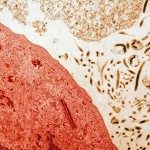Link to Pubmed [PMID] – 32128327
Link to DOI – 10.1093/ofid/ofz482
2019 Dec; 6(12): ofz482
With the increasing frequency and impact of Ebola virus disease (EVD) outbreaks illustrated by recent epidemics, a good understanding of the extent of viral persistance or ribonucleic acid (RNA) detection in body fluids from survivors is urgently needed.Ebola viral RNA shedding was studied with molecular assays in semen (n = 1368), urine (n = 1875), cervicovaginal fluid (n = 549), saliva (n = 900), breast milk (n = 168), and feces (n = 558) from EVD survivors in Guinea (PostEbogui cohort, n = 802) at a regular base period until 40 months after inclusion.Twenty-seven of 277 (9.8%) male survivors tested positive for Ebola RNA in at least 1 semen sample. The probability of remaining positive for Ebola RNA in semen was estimated at 93.02% and 60.12% after 3 and 6 months. Viral RNA in semen was more frequent in patients with eye pain (P = .036), joint pain (P = .047), and higher antibody levels to Ebola virus antigens (nucleoprotein [P = .001], glycoprotein [P = .05], and viral protein-40 [P = .05]). Ebola RNA was only rarely detected in the following body fluids from EVD survivors: saliva (1 of 454), urine (2 of 593), breast milk (2 of 168), cervicovaginal secretions (0 of 273), and feces (0 of 330). Ribonucleic acid was detected in breast milk 1 month after delivery but 500 days after discharge of Ebola treatment unit (ETU) in 1 woman who became pregnant 7 months after discharge from the ETU.The frequency and potential long-term presence of viral RNA in semen confirmed that systematic prevention measures in male survivors are required. Our observation in breast milk suggests that our knowledge on viral reservoir in immune-privileged sites and its impact are still incomplete.

